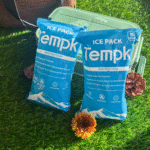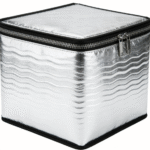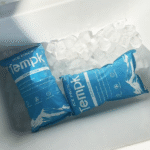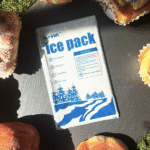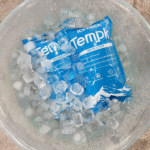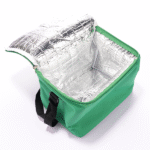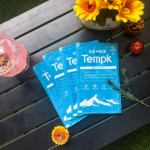La glace sèche emballe Perth: Comment expédier en toute sécurité 2025
Si vous expédiez des marchandises surgelées, dry ice packs Perth can keep products solid for days—provided you size refrigerant correctly, évacuer la boîte, et suivre 2025 règles (Liste de contrôle IATA; ADG 7.9). Perth’s summer heat—peaking at 43.6 °C in January 2025—demands extra margin and smarter packouts to prevent temperature excursions and refusals at tender.
-
Pick when dry ice packs Perth beat gel/PCM for lanes and products.
-
Size dry ice for heat events using a quick estimator and real‑world baselines.
-
Pack and label UN1845 passer 2025 IATA acceptance checks.
-
Choose services and timing that reduce dwell and sublimation in Perth.
When should you use dry ice packs Perth for frozen vs chilled goods?
Réponse courte: Use dry ice packs Perth when contents must remain congelé fin à fin (glace, viande, lab samples to −70 °C). Pour glacé 2–8 ° C Lanes (fromage, fruit de mer), choose gel/PCM to stay within food‑safe limits and avoid DG paperwork. WA’s food safety rules treat ≤5 °C as safe for high‑risk foods; dry ice is overkill for most chill‑range shipments.
Pourquoi ça compte pour toi: La glace carbonique est UN1845 (Classe 9) and requires venting, net‑mass marking, and airline/operator acceptance. Gel/PCM packs are non‑DG and simpler for road legs. Dans Perth’s 30–40 °C summers, plan a larger buffer or premium services to clear dwell.
How much dry ice do Perth lanes actually consume?
In a well‑insulated shipper, attendre ~ 5 à 10 lb (2.3–4,5 kg) par 24h, rising during heat waves or depot dwell. Valider sur vos voies avec un bûcheron.
| Ambient scenario | Guide rate (24 H) | Packaging note | Ce que cela signifie pour vous |
|---|---|---|---|
| 20–25 °C metro | 5–7lb | EPS/VIP shipper | Base de base; confirm once per lane. |
| 30–35°C l’été | 8–12 lb | Higher wall‑R + remplissage de vide serré | Ajouter 20–40% for Perth heat. |
| Regional WA + dwell | 10–14lb | VIP + premium service | Budget for delays; log temps. |
Conseils pratiques que vous pouvez utiliser
-
Heat spikes (35–40°C): Book early pickups and avoid late‑day depot queues.
-
Marchandises refroidies: Prefer gel/PCM to prevent accidental freezing and DG admin.
-
First three shipments: Ajouter un enregistreur de données and keep SOPs if you need to reproduce success.
Vraie cas: A Perth gelato brand switched to a VIP shipper and +30% dry ice in summer; 48 h lanes stayed under −18 °C after prior excursions.
Comment emballez-vous & label dry ice packs Perth to pass 2025 chèques?
Core rules: La glace carbonique est «Dioxyde de carbone, solide,»Un1845, Classe 9. Boxes must vent CO₂, montrer masse nette de glace carbonique (kg), and meet IATA acceptance for air consignments (no Shipper’s Declaration when cooling non‑DG contents). Align road/rail with ADG 7.9 (mandatory from Oct 1, 2025).
Emballage étape par étape (air with non‑DG contents):
-
Utiliser un extérieur ventilé avec un EPS/VIP intérieur.
-
Bag and brace produit; keep CO₂ off food surfaces.
-
Lieu dry ice around/above charge utile; weigh and record Kg net.
-
Remplir les vides (pas hermétique); assurer la ventilation.
-
Appliquer Classe 9 diamant + «Dioxyde de glace sèche / carbone, solide,»Un1845 + Kg net sur un visage.
-
Attach the Liste de contrôle d'acceptation de la glace sèche de l'IATA (2025) if required by the operator.
What must appear on the box (et pourquoi)?
| Exigence | What you print/apply | Pourquoi ça compte |
|---|---|---|
| Nom d'expédition approprié & Et | «Glace sèche» / «Dioxyde de carbone, solide", UN1845 | Identification universelle; smoother acceptance. |
| Classe 9 étiquette | 100× 100 mm, seven‑stripe top | Mandatory hazard label. |
| Masse nette (kg) | Par exemple, « Glace carbonique 8 kg» | Common rejection if missing. |
| Emballage ventilé | Pas hermétique; lid tolerance | Prevents rupture and ensures legal venting. |
Safety basics for WA teams
-
Exposition au coré: Keep packout areas ventilated; observe 5,000 ppm twa / 30,000 PPM Stel.
-
EPP: Cryo‑gloves and eye protection; never bare‑hand blocks.
-
Élimination: Let dry ice sublimate in a safe, ventilated space—never sinks or sealed rooms.
Dry ice packs Perth vs gel/PCM: Lequel devez-vous choisir?
Règle:
-
Frozen targets: Choisir dry ice packs Perth (UN1845) with barriers to avoid cold shock.
-
Glacé (2–8 ° C): Utiliser gel / pcm—non‑DG, easier for road, no risk of freezing texture.
| Liquide de refroidissement | Gamme typique | Conformité | Mieux pour |
|---|---|---|---|
| Glace sèche (UN1845) | ~−78 °C vapor | DG; IATA PI 954 for air | Marchandises surgelées; interstate/air legs. |
| Gel/PCM | 0–8 ° C (or specific PCM) | Non-DG | Laitier, fruit de mer, vaccins (glacé) by road. |
Estimateur rapide: how much dry ice for Perth?
Why these numbers? They align with carrier/EHS baselines (5–10 lb par 24h) et ajoutez un Perth hot‑weather factor. Test and tune per lane.
Mini tool: are you flight‑ready with dry ice packs Perth?
-
Is any leg by air?
Yes → Book DG‑capable service; apply UN1845 labels; bring the 2025 liste de contrôle. -
Température cible?
Frozen → Dry ice with isolation barrier.
2–8 °C → Gel/PCM and thicker insulation. -
Durée >24 h en été?
Yes → Increase dry‑ice mass 25–50%, choose VIP shippers, et expédition du lundi au mercredi.
Chaleur, service, and timing: optimizing dry ice packs Perth
Perth climate reality: Mean summer maximum 31.6 ° C; peaks >40 °C push sublimation and raise rejection risk if net kg isn’t accurate. Livre StarTrack Premium / Next Flight for tight hold times on air legs; expect DG checks and surcharges. Morning pickups dodge late‑day depot heat.
Field‑tested starting points
| voie | Typical setup | Votre point de relance |
|---|---|---|
| Metro same‑day | 2–3 kg dry ice in foam esky | Shade parcels; avoid vehicle hot spots. |
| Perth → Geraldton/Bunbury (du jour au lendemain) | 3–5 kg; confirm whether any leg flies | Book DG‑capable service if air is involved. |
| Perth → Pilbara/Kimberley | 5–8 kg + VIP + Next Flight | Plan for tarmac heat and long transfers. |
Actual shipment: 35 L esky + 6 kg dry ice on Next Flight held gelato below −12 °C during 40 °C ramp conditions.
2025 développements & trends impacting dry ice packs Perth
Quoi de neuf 2025: Le IATA 66th Ed Addendum (effective 30 Apr 2025) keeps the Dry Ice Acceptance Checklist front‑and‑center; ADG 7.9 becomes mandatory Oct 1, 2025; and WA’s hotter summers force larger safety margins. Checklist‑first operations and DG‑capable domestic services remain critical for UN1845.
Dernier en un coup d'œil
-
Discipline de la liste de contrôle: Operators expect the 2025 IATA checklist at tender for non‑DG contents cooled by dry ice.
-
Heatrisk planning: More frequent heat spikes require +20–40% mass in summer lanes.
-
Blended cooling: Many shippers mix dry ice for air legs et gel/PCM for road to cut DG touchpoints.
Perspicacité du marché: Expect uptake of Expéditeurs VIP, bûcherons de données, et returnable packaging in Perth to protect margins and E‑E‑A‑T signals with verifiable lane validation.
Questions fréquemment posées
1) Do I need a DG declaration for dry ice?
Pas quand cooling non‑DG contents; Étiquette un1845, afficher le kg net, Utiliser un emballage ventilé, et suivre le Liste de contrôle d'acceptation de la glace sèche de l'IATA (2025).
2) Ce qui doit être imprimé sur la boîte?
"Glace sèche / dioxyde de carbone, solide,» UN1845, Kg net, Diamant de classe9, sender/consignee—on one face.
3) How much dry ice for 48 h in Perth summer?
Start from 5–10 lb / 24h et ajouter 20–40% for 30–35 °C lanes; Valider avec un enregistreur.
4) Is raw dry ice safe to carry on a flight?
Airlines typically allow passengers ≤ 2,5 kg dans un ventilé package with approval and declaration—always check operator variations.
5) For cheese/seafood at 2–8 °C, do I use dry ice?
No—use gel / pcm to avoid freezing and DG handling.
Résumé & recommandations
Points clés: Dry ice packs Perth excel for frozen payloads; gel/PCM fits 2–8 °C. Étiquette UN1845, secouer, et state net kg. Size using 5–10 lb / jour plus summer margin; validate with loggers. Align SOPs to Iata 2025 et ADG 7.9.
Étapes suivantes:
-
Classify payload (congelé ou réfrigéré).
-
Pick coolant and shipper (VIP for heat).
-
Calculate dry‑ice mass with the estimator; test on your lane.
-
Apply labels and the IATA checklist; book DG‑capable service for air legs.
-
Monitor first three runs and lock SOPs.
À propos du tempk
Nous concevons des expéditeurs isolés et dry ice packs Perth solutions tuned for WA’s climate. Our engineers right‑size refrigerant using BOM data, IATA checklists, et ADG 7.9—and provide packout SOPs, label sets, and validation templates so your team ships confidently year‑round.
CTA: Want a lane‑matched kit and SOP? Réservez une consultation de 15 minutes and get a Perth‑specific estimate.

















